In the ever-evolving world of business, data is king. For companies that rely on financial insights, decision-making hinges on how well they can analyze and interpret their financial data. Sage 50, a trusted accounting software, is at the forefront of helping businesses manage their financial operations. However, many users of Sage 50 often overlook one of its most powerful features: custom reports.
This article will delve deep into the world of Sage 50 custom reports, discussing their importance, how they can be created, and tips to maximize their value. If you’re looking to harness the full power of Sage 50, understanding custom reporting is your key to success.
What Are Custom Reports in Sage 50?
Custom reports in Sage 50 are tailored reports that go beyond the pre-built reporting templates provided by the software. While the default reports cover a wide range of business needs—such as profit and loss statements, balance sheets, and accounts receivable summaries—custom reports allow businesses to design reports specific to their unique workflows, processes, and analytical needs.
For example, a manufacturing company might require a report that integrates production data with financial metrics, while a retail business might want to track sales trends by region or product category. Custom reports make these specific data slices possible.
Why Do You Need Custom Reports in Sage 50?
1. Personalized Insights
Every business is unique, with its own priorities, metrics, and goals. Generic reports, while helpful, may not always capture the nuances of your operations. Custom reports allow you to focus on the exact data points that matter most to your organization.
2. Improved Decision-Making
Decision-making becomes more strategic when you have access to the right data at the right time. Custom reports provide actionable insights that can guide operational, financial, and strategic decisions.
3. Streamlined Reporting Process
Manually exporting and formatting data from multiple reports is time-consuming and prone to errors. Custom reports automate this process by consolidating data into one comprehensive document, saving you valuable time.
4. Regulatory and Compliance Needs
Businesses in industries with strict compliance requirements often need specific report formats to meet regulatory standards. Custom reports can help you adhere to these guidelines effortlessly.
Types of Custom Reports in Sage 50
Sage 50 offers flexibility to create custom reports across different areas of business. Some popular categories include:
1. Financial Reports
These include customized Balance Sheets, Income Statements, and Cash Flow Statements. Businesses can modify these reports to:
- Present data in different formats (e.g., monthly, quarterly, yearly comparisons).
- Show or hide specific accounts or categories.
- Consolidate financials from multiple departments or entities.
2. Inventory Reports
For businesses managing stock, custom inventory reports are crucial. These reports allow users to:
- Identify slow-moving or overstocked items.
- Monitor inventory levels in real-time.
- Track stock movements, including purchases and sales.
3. Sales and Customer Reports
Customized sales reports help track:
- Sales by product, customer, or region.
- Sales trends over time.
- Sales performance metrics such as profitability, discounts, and returns.
4. Job and Project Reports
For project-based businesses, job costing reports are indispensable. Customizing these reports provides:
- Profitability tracking by job or client.
- Detailed cost analysis per project or job.
- Comparison of actual versus budgeted costs.
5. Tax Reports
Generate tax-compliant reports that calculate VAT and other tax liabilities for seamless filing.
Also Read: How to Import Invoices into Sage 50?
How to Create Custom Reports in Sage 50?
Creating custom reports in Sage 50 involves using the built-in reporting tools or external integrations. Below is a step-by-step guide to get started:
Step 1: Identify Reporting Needs
Before diving into the report builder, outline the purpose of the report. Define:
- The questions you want the report to answer.
- The key metrics and data points required.
- The frequency with which the report will be used.
For example, if you’re designing a sales report, decide whether you need to track performance monthly, quarterly, or annually.
Step 2: Use the Report Designer
Sage 50’s Report Designer is a powerful tool for customizing reports. Here’s how to use it:
- Open Report Designer: Navigate to the Reports & Forms section in Sage 50 and choose a report you want to modify. Click “Design” to open the Report Designer.
- Customize Fields: Add, remove, or rearrange fields as per your requirements. For instance, you can include custom fields like “Region” or “Customer Type.”
- Apply Filters: Use filters to refine data, such as showing only transactions from a specific time period or customer group.
- Format Layout: Adjust the visual layout by modifying fonts, colors, and column alignments for better readability.
- Save the Report: Once you’re satisfied, save the report with a new name to preserve the original template.
Step 3: Incorporate Formulas and Calculations
Sage 50 allows you to add custom formulas to your reports. This is especially useful for calculating ratios, percentages, or other derived metrics. For instance, you can create a formula to calculate profit margins or average sales per customer.
Step 4: Test and Refine
Run the custom report using sample data to ensure it meets your needs. Adjust filters, layouts, or calculations as needed.
Step 5: Schedule and Automate
For reports that need to be generated regularly, consider automating them. Sage 50 offers scheduling features to run reports at specific intervals, ensuring you always have up-to-date data.
Advanced Custom Reporting with Third-Party Tools
While Sage 50’s built-in Report Designer is robust, businesses with complex reporting needs may benefit from third-party tools and integrations. Here are some popular options:
1. Crystal Reports
Crystal Reports is a widely used reporting tool compatible with Sage 50. It offers advanced features like cross-tab reports, charts, and multi-source data integration. With Crystal Reports, you can create visually appealing dashboards and drill-down reports.
2. Microsoft Excel Integration
Sage 50 allows seamless data export to Excel, where you can use pivot tables, graphs, and formulas to create highly customized reports. Excel is particularly useful for businesses that require dynamic dashboards or extensive data analysis.
3. Power BI
Microsoft Power BI can integrate with Sage 50 to provide interactive, real-time reporting capabilities. It allows users to visualize data through customizable dashboards and share insights across teams.
4. Sage Intelligence Reporting
Sage Intelligence is an add-on specifically designed for advanced reporting in Sage software. It provides a drag-and-drop interface, pre-built templates, and the ability to connect multiple data sources.
Tips for Creating Effective Custom Reports
Creating custom reports is as much an art as it is a science. Here are some tips to make your reports more effective:
1. Keep It Simple
Focus on the key metrics that matter most. Overloading a report with too much data can make it overwhelming and difficult to interpret.
2. Use Visual Aids
Incorporate charts, graphs, and tables to make the report visually engaging and easier to understand. For instance, a bar chart can quickly convey sales trends compared to rows of numbers.
3. Ensure Accuracy
Double-check all formulas, filters, and data sources to ensure the accuracy of your reports. Errors in custom reports can lead to poor decision-making.
4. Align with Business Goals
Every report should tie back to a specific business goal or objective. For example, if your goal is to improve cash flow, focus on metrics like outstanding invoices and payment trends.
5. Test with Stakeholders
Share the custom report with key stakeholders and gather feedback to ensure it meets their needs. This collaborative approach can improve the report’s relevance and usability.
Common Challenges and How to Overcome Them
While custom reports offer immense benefits, businesses may face challenges during their creation. Here’s how to address some common issues:
1. Limited Technical Knowledge
Some users may find Sage 50’s Report Designer intimidating, especially if they lack technical expertise. Solution: Leverage tutorials, Sage’s support resources, or consult with a Sage-certified professional.
2. Performance Issues
Complex reports with large datasets can slow down the system. Solution: Optimize the report by limiting the data range, using indexed fields, or exporting to external tools like Excel for heavy calculations.
3. Data Integration
Pulling data from multiple sources can be challenging. Solution: Use third-party tools like Sage Intelligence or Power BI to integrate data seamlessly.
4. Regulatory Compliance
Ensuring custom reports comply with tax or industry regulations can be daunting. Solution: Regularly update your report templates to reflect the latest compliance requirements.
The Future of Reporting in Sage 50
As businesses continue to adopt data-driven strategies, the demand for advanced reporting capabilities will only grow. Sage 50 is evolving to meet these needs by integrating with cutting-edge tools like AI-powered analytics and cloud-based reporting solutions. By staying ahead of these trends, businesses can ensure they remain competitive in an increasingly data-centric world.
Conclusion
Sage 50 custom reports are more than just a feature—they are a gateway to unlocking valuable business insights. By tailoring reports to your unique needs, you can make smarter decisions, streamline processes, and stay ahead of the competition. Whether you’re a small business owner or a financial professional, mastering custom reporting in Sage 50 is a skill that will pay dividends for years to come.
So, take the time to explore the possibilities of Sage 50 custom reports. Experiment with the Report Designer, integrate third-party tools, and collaborate with your team to create reports that drive results. The power of data is at your fingertips—use it wisely!
Frequently Asked Questions (FAQs)
Sage 50 Custom Reports are personalized financial and management reports tailored to meet specific business requirements. They go beyond the standard reports in Sage 50, allowing users to filter, sort, and present data in a way that best suits their decision-making needs.
Custom reports provide insights tailored to your business operations, helping you analyze data more efficiently. They save time by eliminating the need for manual data manipulation and offer more accurate and relevant information for strategic decision-making.
Yes, Sage 50 offers built-in tools for customizing existing reports, such as modifying columns, filters, and layouts. However, for more advanced customizations, such as creating entirely new reports or integrating external data, you may need the help of a Sage expert.
You can create various custom reports, including:
1. Financial Statements (e.g., customized Profit & Loss and Balance Sheets).
2. Inventory Reports.
3. Sales Analysis Reports.
4. Customer and Vendor Reports.
5. Payroll Reports.
6. Job Costing and Project Management Reports.
Yes, Sage 50 allows you to export custom reports to Excel, enabling further data analysis, formatting, and sharing. This feature is especially useful for businesses that need to collaborate on reports or integrate data with other applications.
While Sage 50 has built-in customization tools, advanced custom reports might require third-party reporting tools like Sage Intelligence Reporting or Crystal Reports. These tools offer greater flexibility and advanced data manipulation capabilities.
Custom reports follow the same security protocols as standard reports in Sage 50. User access permissions can be set to control who can view, create, or modify custom reports, ensuring data security and integrity.




